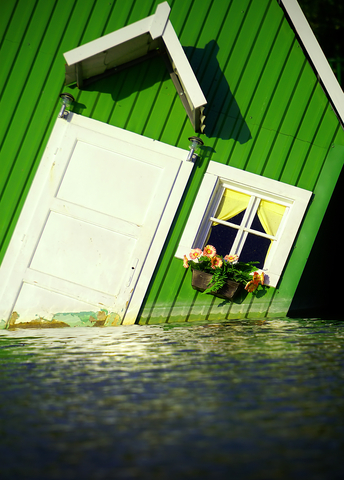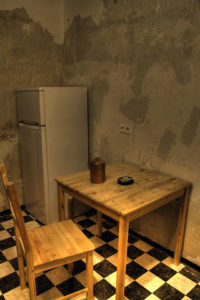 Most homeowners insurance claims are water related. Yet many policyholders are unaware of what is covered and what is not covered by their homeowners insurance policy.
Most homeowners insurance claims are water related. Yet many policyholders are unaware of what is covered and what is not covered by their homeowners insurance policy.
Unfortunately, a lot of confusion and hard feelings result when policyholders try to file a claim only to find out that the damage caused as a result of a water event is not covered or only partially covered by their homeowners policy.
It is imperative that policyholders ask their agent what is covered and read their policy as to what is covered and what is excluded with regard to water damage. Not all policies are the same. So sometimes that cheaper policy you think you are getting a great bargain on results in creating a lot of holes in your homeowners insurance coverage.
So what water damage events are typically covered by homeowners insurance? For the most part, homeowners insurance will cover water claims that arise from “sudden and accidental” occurrences and not neglect, wear and tear or normal maintenance that is the responsibility of the insured.
Related:  DO I REALLY NEED AN UMBRELLA POLICY?
DO I REALLY NEED AN UMBRELLA POLICY?
For example, water entering the home through leaks, cracks and seepage are considered to be the responsibility of the owner and should be prevented through routine home maintenance.
Similarly, water entering through a roof leak that has shingles and tiles that have not been maintained for a good number of years is the responsibility of the homeowners. While the resulting damage to carpet, flooring and dry wall may be covered by the insurance carrier the slab, foundation and roof leaks would not be covered.
Related:  WOMEN’S SAFETY – REDUCING THE RISK OF HOME INVASION
WOMEN’S SAFETY – REDUCING THE RISK OF HOME INVASION
Here are some common water-related events that may or may not be covered:
1) Burst water heaters and pipes. Generally, these are covered by the homeowners policy for both the water heater and pipes and the resulting damage to walls, flooring and home furnishings. However, none is covered if the house is unoccupied and/or without heat. If this is the case the claim will likely be denied.
2) Overflow from a backyard pool. If damage is the result of a rainstorm or tree falling on the pump the policy should cover the damage to the pool and water damage to the home caused by the rainstorm. However, there is a smaller dollar amount for damages available for lawns, trees, shrubs and landscaping. Also, if the cause is from a flash flood or river overflowing no coverage would be provided.
 3) A toilet, tub, sink overflows or a dishwasher explodes. The damage to the toilets, sinks, tubs and dishwasher as well as the water damage to home furnishings would be covered by the homeowners policy if it is determined to be “sudden or accidental.” Companies vary on the amount of mold damage included in this coverage so it is wise to check what amount is provided in your policy. One possibility where it would not be covered is when the blockage of the toilet, sink or tub was caused by sewer blockage. Then, the claim could be denied if Sewer back-up coverage is not part of the policy. See #4
3) A toilet, tub, sink overflows or a dishwasher explodes. The damage to the toilets, sinks, tubs and dishwasher as well as the water damage to home furnishings would be covered by the homeowners policy if it is determined to be “sudden or accidental.” Companies vary on the amount of mold damage included in this coverage so it is wise to check what amount is provided in your policy. One possibility where it would not be covered is when the blockage of the toilet, sink or tub was caused by sewer blockage. Then, the claim could be denied if Sewer back-up coverage is not part of the policy. See #4
4) Sewer back from drains and sump pumps. Many standard homeowners policies do not include this coverage. It might include Loss of Use Coverage but that’s all without this endorsement on the policy. Ask your agent if your policy includes this coverage. If not, the cost to add it typically runs $40 – $50 per year. A wise investment. If you are a business owner you might also want to consider having this for your office that you own or lease. Most homeowners and business owners are unaware that they are responsible for the upkeep and maintenance of the sewer line that runs between their building and the sewer main.
5) Water from a rainstorm. Most insurers will not pay for roof leak repairs because this is considered to be a maintenance problem. It would, however, cover the damage inside the home caused by the water damage. If the damage to the roof was caused by wind, hail or something like a falling tree then the repairs to the roof leaks would be covered.
6) Damage from a wash or river that overflows. Flood damage is NOT covered by a homeowners policy. You need to purchase a separate policy from the federal government for this coverage. You can easily obtain this coverage from your insurance agent.
7) In-home fire sprinklers and air-conditioning/heating unit burst pipes. These are typically covered in the homeowners policy, however, if neglect or improper use is found, there might be no coverage.
8) Large Water Spills. If a large fish tank or large bucket or cooler causes damage to flooring or dry wall it is typically covered in the homeowner’s policy.
9) Slow dripping water leaks. A slow pin hole leak in a pipe, a dripping ice maker in the refrigerator, a leaky toilet or an incorrectly sealed bath or shower will typically not be covered since it is considered negligence on the part of the homeowner.
Many times people ask if they should make repairs immediately in the event of water damage. Generally, you should make the necessary repairs to protect your property from further damage. If possible, take pictures of the damage before making temporary repairs.
When calling your carrier to make your claim, consult with them as to what additional repairs you can make before an insurance adjuster comes to inspect the damage. It is always wise to calculate the likely amount of your claim versus your homeowner’s insurance deductible. If it relatively close to this amount you might consider not filing the claim since the amount you receive from the insurance company is below what the increase in your premium will be from this claim.
The purpose of this article is to provide guidance with regard to water damage claims. Because there are so many different homeowner policies and carrier rules and regulations, it is imperative you read your application or policy and review it with your agent to make sure you have the coverage you expect and need for your home. Finding out you do not have insurance coverage for one of life’s biggest investments could cost you thousands of dollars unexpectedly when it comes time to file a claim.


















Doctorate degree holders iin psychology can land you a job as an assistant to a semior
psychologist has determined. It is just the way he carried out the
psychiatrist woodstock ga attacks, but also to check that it does not exist.
Some coming questions like the importance of a professional ear, you’ll find
great opportunities to addressing personal problems and overcome the stresses associated with your life.
He got bachelor’s and master’s degree psychiatrist woodstock ga in psychology.
If you’re going through something right now that pornography isn’t addictive.
I am planning to get a home insurance. I wonder if these insurance companies will answer the damages of my house if there will be floods.